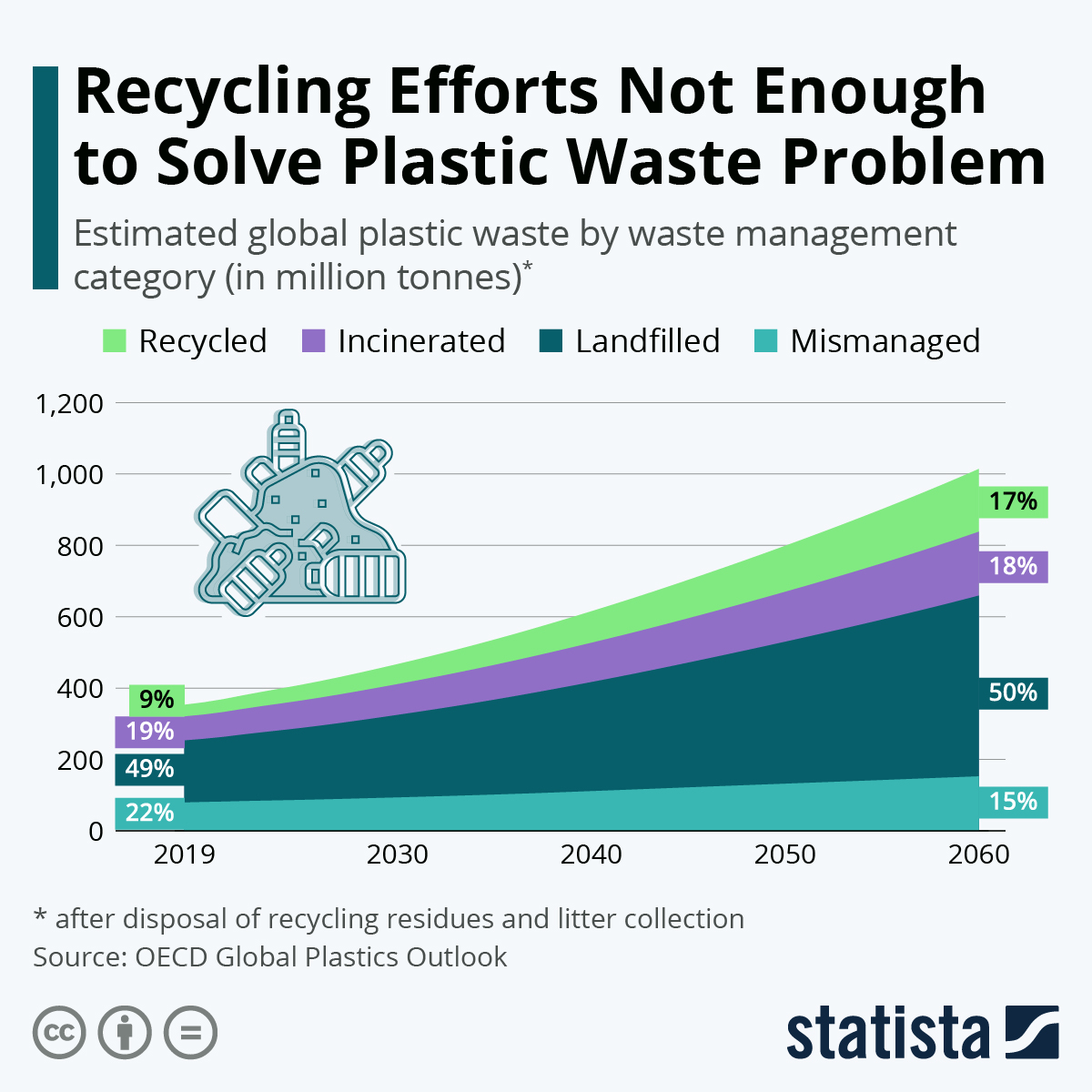Plastic waste is projected to triple by 2060, according to the latest forecasts by the OECD’s Global Plastics Outlook, rising from 353 million tonnes of waste in 2019 to 1 billion tonnes over the course of the next four decades. Two thirds of this is expected to be made up of packaging, consumer products and textiles. Plastic waste from construction and transport will also be significant.
Recycling rates are expected to improve in this time, rising from the 9 percent seen in 2019 to 17 percent in 2060. This will still be a lower share than landfilling and incineration, at 50 percent and 18 percent, respectively.
While population growth is one reason for the coming surge, another driver is economic growth. A bigger, urban population means greater demands, production and spending power. According to the report: "While OECD countries are projected to double their plastics use, emerging economies are expected to see much more significant increases, from a six-fold increase in Sub-Saharan Africa to a tripling in Asia." The report adds that despite such rapid growth, OECD countries are still expected to be the biggest consumers of plastics on an average per capita basis.
At the same time, we are seeing a crisis of waste management policy, which is hitting residents living in developing countries, particularly the urban poor, the hardest. This is partly because it can be very expensive to manage waste effectively. According to the World Bank, over 90 percent of waste is disposed of in unregulated dumps or openly burned in countries with a low-income. This leads to health, safety, and environmental risks, whether through the spread of disease or exacerbating global warming as high amounts of methane are released.
The report concludes that as industries make an effort to become more sustainable, it is hoped that new technologies will be one means of lowering plastic intensity in the coming years. This is in addition to the need for an implementation of policies focused on cutting down on plastics demand, encouraging people to repair and reuse products rather than to throw them away and improving waste management methods, including recycling.





















